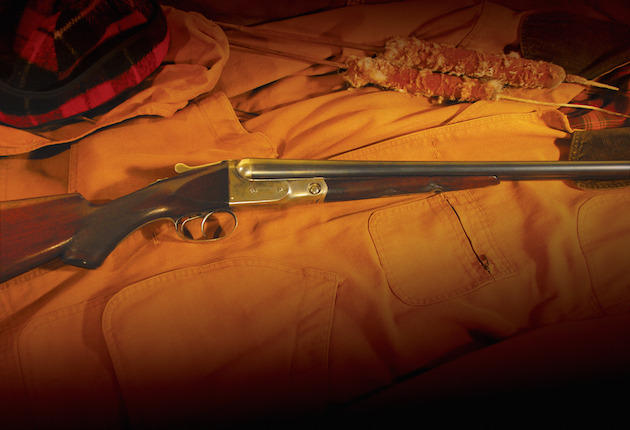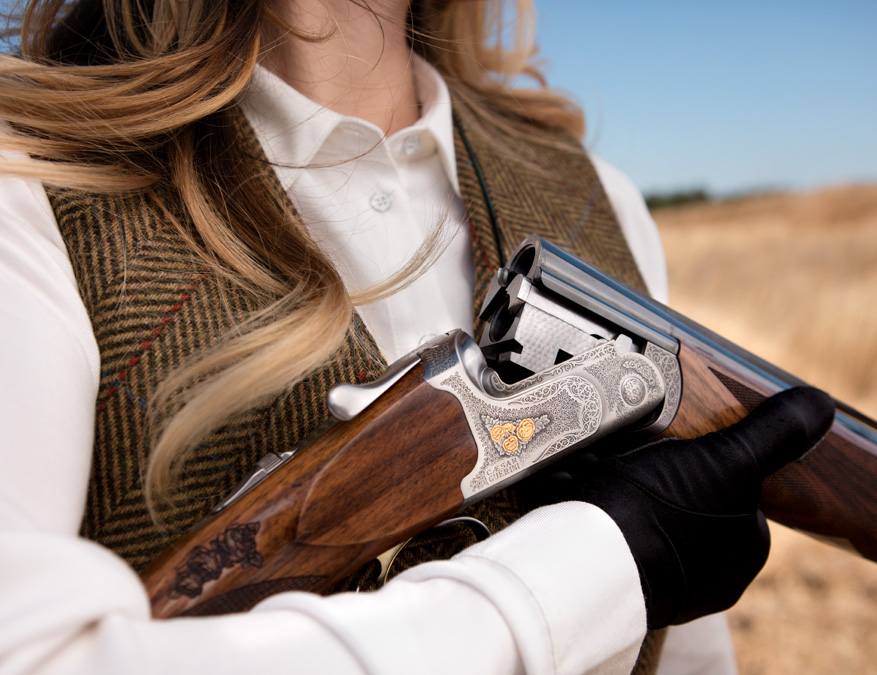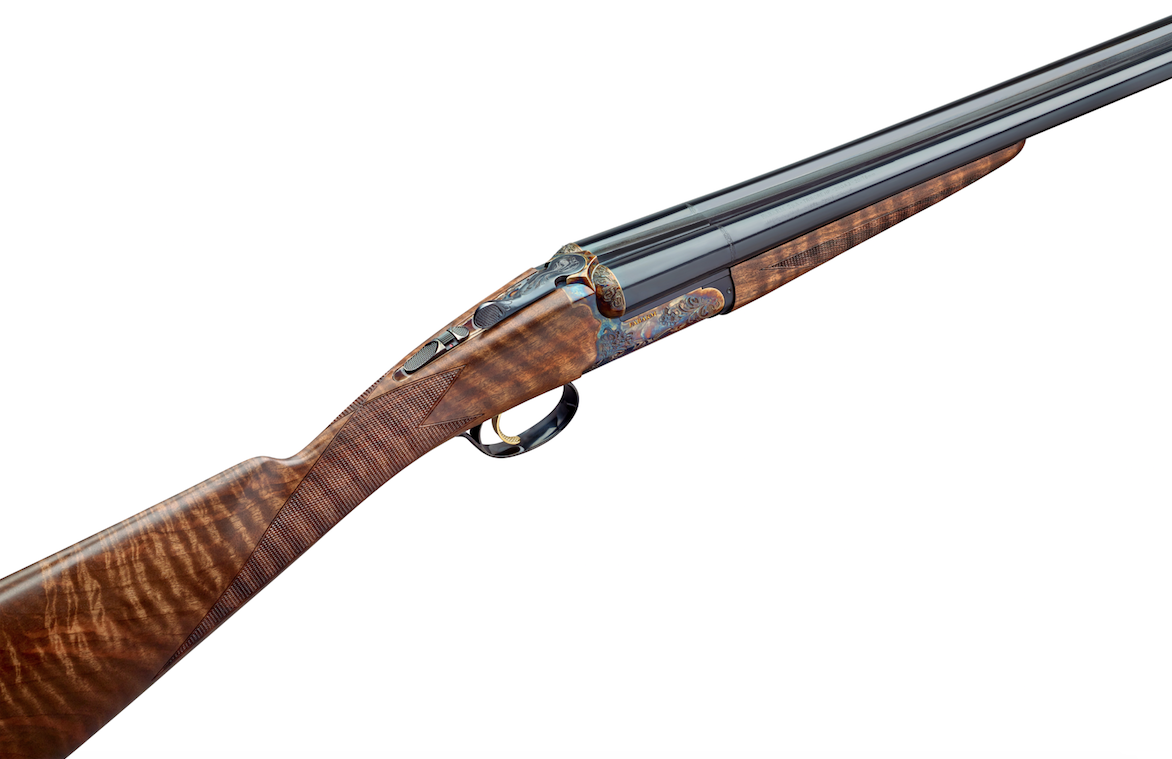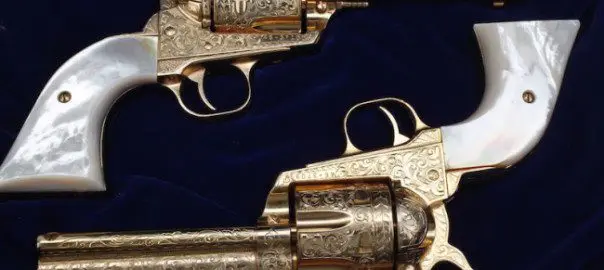Late November, 1960, the old Desportes place near Lykesland, South Carolina.
Littlebit lopes through the overgrown field of an old, abandoned home place below my grandfathers’ farm. Waist-high broomstraw, painted ochre by the morning sun, caresses us as we follow my uncle’s English setter up a slight hill. Skirting leafless stands of stunted red oak and thickets of wild plum, she’s a dog on a mission. Ice-tinged air reddens our faces and ruffles her busy tail, a black-spotted but mostly white, a tapered pennant that helps mark her erratic yet purposeful course. Trained by my dad, she is young and radiant. As we walk and watch, from across the road behind us a lonely bobwhite beckons.
From hundreds – perhaps thousands of scents – Littlebit detects the one she seeks. She snuffles back and forth over the sandy soil and turns upwind. Two steps and she locks into a point, tail held straight out as if to flag our attention, her dark eyes laser-focused toward the bottom of a low, red-leaved sparkleberry bush.
The field is a gently rolling sea of brightly lit russets, browns and grays. Towering over my grandfather’s farmhouse, a bank of approaching clouds give weight to the sky in an ominous, indigo wall. The morning sun colors Littlebit’s coat with an eerie, golden glow. The scene looks magical. Everything is silent. And now, suddenly still. A faint quiver of excitement is the only indication that she isn’t part of a Percival Rousseau oil painting. As we approach, our long shadows stop just shy of the quail.
Thankfully, even after 54 years, that image is still frozen in my memory.
“You take ’em, son,” Uncle Crawford’s deep voice a gravely whisper, nods me forward.
I’m twelve. He’s my hero. His words weigh heavily on my thoughts as I cautiously step forward. I’m thinking about those silver skeet-shooting trophies on his bookshelves and praying that I don’t embarrass myself by missing. A shiver courses down my neck. With my thumb, I ease the safety forward to cover the gun’s engraved S.
Uncle Crawford had given me my first shotgun—an ancient single-shot, 32-inch Harrington and Richardson 12-gauge—the year before. The cracked stock was too long for me and had been repaired with cotton twine and shellac. An egg-shaped, two-ounce lead fishing sinker substituted for the broken ejector. Muzzleloader slow, it was nearly impossible to waste shells—the perfect gun for a kid. I loved it. Shot ducks, doves, raccoons and a truckload of squirrels with it. In fact, I still own the H & R. I’ve retired it to my gun safe, an art object too rickety to shoot, too priceless to give away, a rich patina of oiled rust more handsome now than the day he gave it to me. Funny how given enough time, no matter how inexpensive, your first shotgun grows better looking and more valuable with age.
But that’s not what I’m carrying as I approach Littlebit. Today, my uncle has entrusted me with his newly traded-for Parker 20-gauge. It is beautiful and stunningly well made, with an almost feminine look. My fingers can easily encircle the stock above the grip. Even the small, ornately-designed and engraved forend release lever is—like every part of the gun—beautifully crafted. The Harrington is a boat paddle next to it. Best of all, this Parker fits my 12-year old frame.
Uncle Crawford’s Twenty is a VHE with 26-inch barrels. It’s light, swings fast, and does not kick. Its serial number tells us that it was built in 1918, near the end of World War I. It was a time of great pride of craftsmanship. Many factory workers (like bird hunters) of the time wore neckties. In an age of three-dollar shotguns, an inexpensive Parker could easily cost ten times that, with some selling for more than a thousand dollars.
Parkers were unusual in that each gun, no matter the grade, began life with an equal amount of attention to detail. A field grade-gun such as the VH was put together with the same high level of craftsmanship applied to their most expensive offerings: the A1-Special, and the mysterious Invincible, of which only three were made.
Charles Parker and his sons—Wilbur, Charles and Dexter—founded Parker Brothers Gun Company in 1868. Beyond the guns’ incredible fit and finish, they featured many small but significant advantages. For instance, after 1905 they began using a hardened, yet easily replaceable T-shaped bolt wear-plate that lasted longer and was inexpensive to repair. Many other guns of the time would “shoot loose” with wear. On Parkers, this plate ensured that the barrels were held firmly in the frame. Interestingly, Parker replaced this part on any gun sent back to the factory without ever charging the customer.
Parkers were owned by Hollywood stars, industry moguls, politicians, authors, generals and even czars. Clark Gable, Annie Oakley, and Zane Grey owned them. Parker remained a family business until the company was sold to Remington Arms in 1934. Then, production from Meridian, Connecticut, to Ilion, New York. Remington continued building Parkers until 1942 when it ceased production to focus on war efforts. Including those made by Remington, just a few more than 242,000 Parkers were made.
Of course it took talent, convictions, and very hard work, but The Parker Gun Company could not have timed its beginnings better. And while the span of its life as a brand was cut short by World War II, the company existed through much of that Golden Age of Hunting and Fishing, from right after the Civil War until the early 1960s. Those of us who lived, hunted and fished during that time always count ourselves lucky.
A businessman and something of a collector, my uncle got his Parker Twenty the way he acquired most anything: a circuitous route of horse trading. He had swapped a 12-gauge Parker VH for several guns, including a Colt Navy, a German Luger, and a few long guns. Then, as I recall, he traded some of that hoard, plus a few others for the Twenty. I was sorely disappointed when I first learned he’d traded away his Parker Twelve. I’d shot it a time or two, and though it kicked like the meanest rodeo bull in the arena, at least it fit me. Worse, the transaction took several months to complete, during which I had to shoot doves with my H & R. I guess I was already spoiled before he let me touch the Twenty.
My shadow reaches the base of the sparkleberry bush and ignites a small explosion. I’m not sure how many quail are in the covey. In a disorienting thunder, they seem to fly in all directions at once. One passes so close to my head I can feel the wind from its wingbeats on my face. I duck, and somewhere behind me I hear Uncle Crawford’s well-worn Lefever roar twice. I regain my composure, swing on a bird flying hard to my left, and fire. I’m a tad late, clipping off a couple of tail-feathers. A good distance out now, he’s a brown sunlit blur against the dark clouds, but I’m right back on him and the second barrel nails him. My first quail! I thank the Lord and mark where he falls.
I look for my bird farther up the hill and behind me I hear my uncle, “Dead. Hunt dead. Littlebit! Dead bird!”
A minute later he walks up, stuffing two birds in his vest pocket and a shock of unruly dark hair back under his cap. He is lighting his pipe through clenched teeth and asks, “You find your bird?”
Proudly, I display my little brown-feathered trophy. It’s not silver. It’s not gold. But it could not mean any more if it was. An infectious grin spans outward from the smouldering pipe encompassing most of his wide face, and I realize that my shot means as much to him as it does to me.
“Your first one, isn’t it boy?”
“Yes sir… that sure is a fine gun.”
We hunted over Littlebit a few more years, and his son Chris grew old enough to join us. But I always used the Twenty, ever more convinced that one day I’d have my own. Then suddenly, Littlebit was killed by a speeding car on the road just below where I shot my first quail. When Uncle Crawford, a burly Army Air Corps veteran who flew harrowing missions over Germany in World War II, told me about it, he had tears in his eyes. And that he was glad the driver didn’t stop. Crawford Grant passed away in 1995. Today, there is a subdivision atop those fields—and the call of the bobwhite has faded.
Though I never could, it took me 29 years to begin trying to repay him (see Sporting Classics, “A Tribute To Kings,” November/December, 1989), to thank him for those quail-hunting trips, for introducing me to the likes of Babcock and Ruark, to stripers and largemouths, to the Mitchell 300 and Shakespeare rods, to Broke Back Pikes and Jitterbugs, to the Ithaca 37 and the Winchester Model 12. And, most of all, to the Parker Twenty.

FINE SHOTGUNS
By John M. Taylor
Firearms expert John Taylor offers a global view of shotguns using photographs and descriptions of guns from the U.S. and many European countries. Sections include how to care for and store your gun, available accessories, and travel cases. Buy Now





great story! i have three parkers none of them in the h igher grades , but I would’nt trade them for for any of the newer shotguns. I have two trojans and one Vh. They are still tight and I hunt pheasants with all of them.